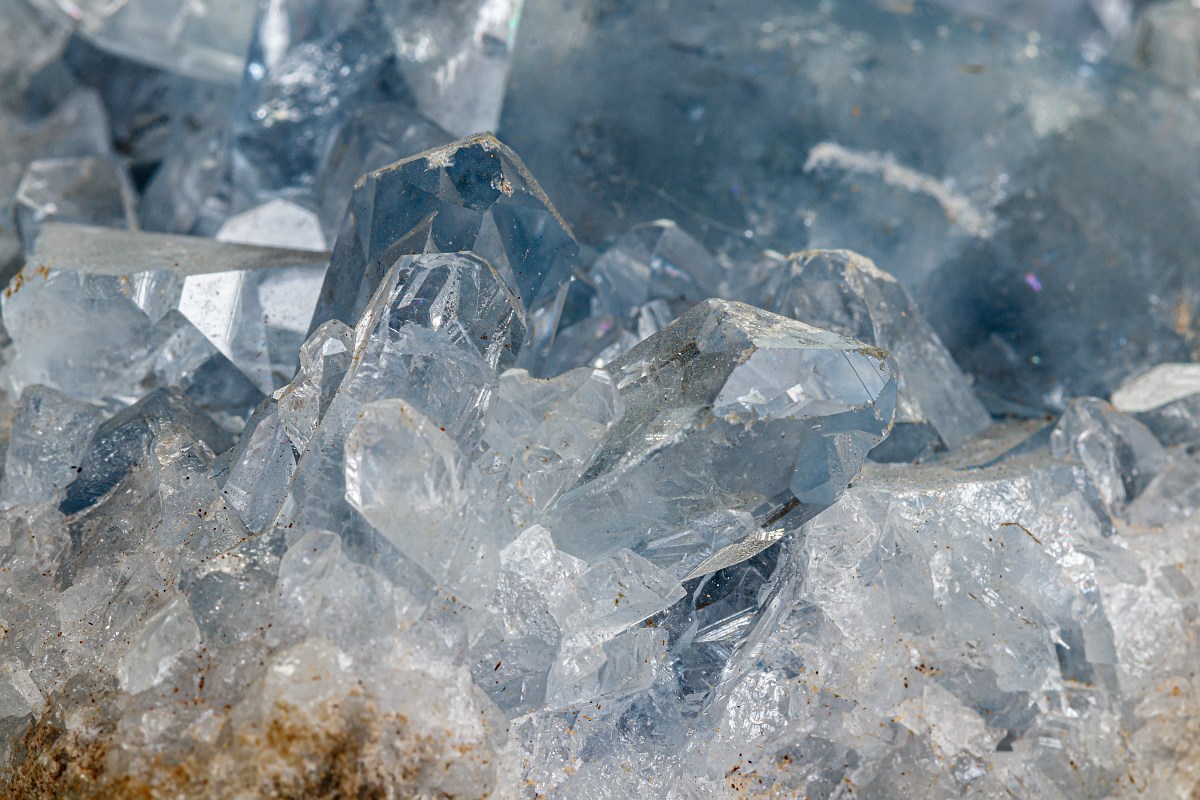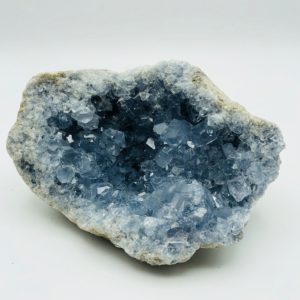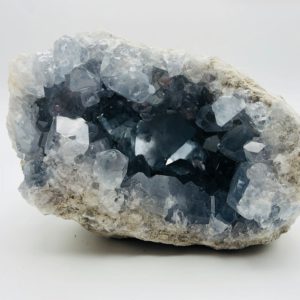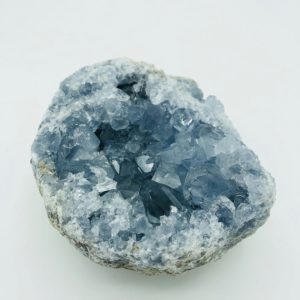Celestine is a stunning mineral with a delicate blue color that is highly sought after by collectors and enthusiasts. It is found primarily in Madagascar and is prized for its unique color, transparency, and crystal formations.
Celestine is a type of strontium sulfate mineral and is often referred to as “celestine blue.” The blue color of celestine is due to the presence of strontium ions in its structure. The mineral can be found in various shades of blue, ranging from light blue to deep blue, and sometimes with a hint of gray or green.
Celestine is most commonly found in Madagascar and is extracted from sedimentary rocks, such as limestones and sandstones. The mineral is also found in other parts of the world, including the United States, Mexico, and Spain, but the highest-quality specimens come from Madagascar.
The celestine crystals from Madagascar are known for their intricate formations, which include large, well-defined crystals, clusters of crystals, and twinned crystals. Some of the largest celestine crystals ever found have come from Madagascar and have weighed over 100 pounds.
In addition to its beauty, celestine also has a number of interesting physical properties. For example, it is highly soluble in water and is also a good conductor of electricity. The mineral is also relatively soft, with a hardness of just 2.5 on the Mohs scale, which makes it susceptible to damage if it is not handled with care.
Celestine is a popular mineral among collectors and enthusiasts, and it is often used in jewelry and decorative objects. The blue color of celestine makes it a desirable mineral for use in jewelry, and it is often used as a substitute for blue topaz or blue sapphire.
FAQ
Q: What is celestine?
A: Celestine is a type of strontium sulfate mineral with a delicate blue color that is highly sought after by collectors and enthusiasts.
Q: Where is celestine found?
A: Celestine is found primarily in Madagascar and is also found in other parts of the world, including the United States, Mexico, and Spain.
Q: What is the blue color of celestine due to?
A: The blue color of celestine is due to the presence of strontium ions in its structure.
Q: What are the physical properties of celestine?
A: Celestine is highly soluble in water, is a good conductor of electricity, and is relatively soft with a hardness of just 2.5 on the Mohs scale.
Q: What is celestine used for?
A: Celestine is used in jewelry and decorative objects due to its blue color and is often used as a substitute for blue topaz or blue sapphire.
Q: What are the largest celestine crystals ever found?
A: Some of the largest celestine crystals ever found have come from Madagascar and have weighed over 100 pounds.

